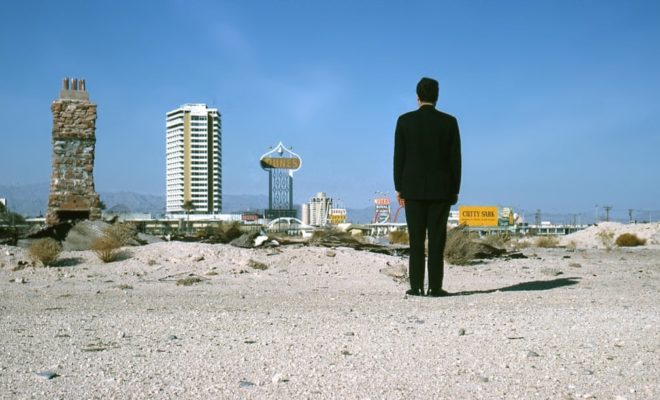 Robert Venturi in Las Vegas in 1966. DENISE SCOTT-BROWN/VSBA PHOTO.
Robert Venturi in Las Vegas in 1966. DENISE SCOTT-BROWN/VSBA PHOTO.
Architecture
Remembering Robert Venturi
“We look backward at history and tradition to go forward; we can also look downward to go upward. And withholding judgement may be used as a tool to make later judgement more sensitive. This is a way of learning from everything.” –Robert Venturi in Learning from Las Vegas (1972)
Last month, the design world lost one of its most influential forces, Robert Venturi. The Pritzker Prize-winning architect died on September 18 in Philadelphia at the age of 93.
Calling Venturi an architect seems almost too singular. True, he did design buildings, but it was his critique of the practice as a whole that secured his place in the discipline as much as his structures. Venturi raised buildings, but he also raised ideas.
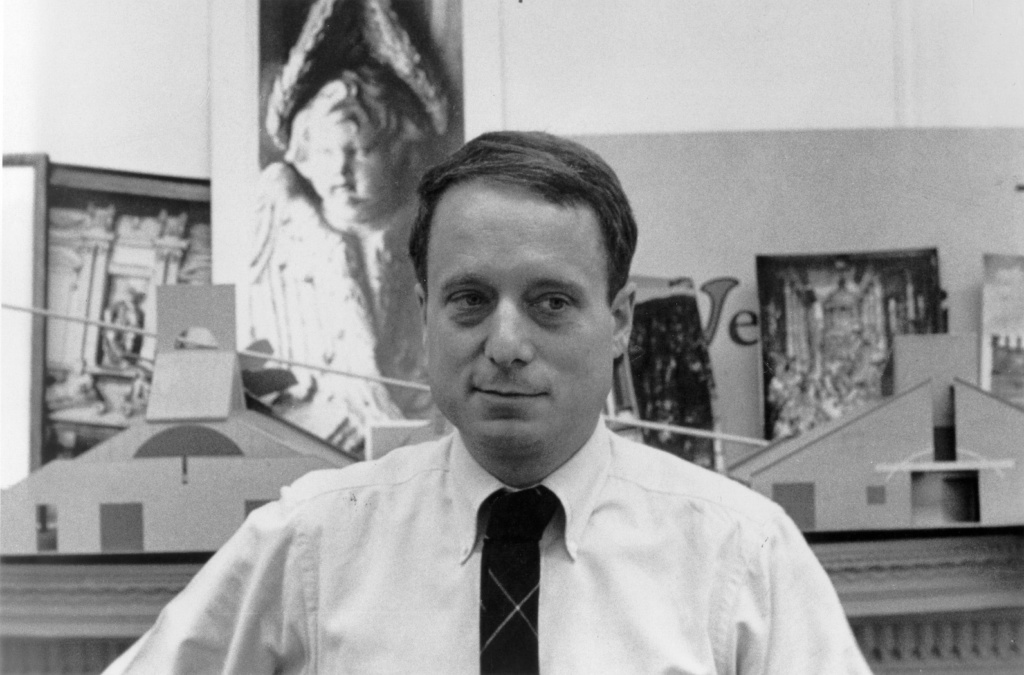
Robert Venturi in front of a model of the Vanna Venturi House. ROLLIN LAFRANCE/VENTURI SCOTT BROWN AND ASSOCIATES PHOTO.
Venturi was born in Philadelphia on June 25, 1925. He grew up in Pennsylvania and enrolled at Princeton University in 1944 where he received his undergraduate and graduate degrees in architecture. Following his education at Princeton, Venturi worked for Louis Kahn and Eero Saarinen, two of the leading modernist architects of the twentieth century. In 1954 Venturi won a fellowship with the American Academy in Rome which allowed him to spend two years studying architecture in Europe.
In 1959 Venturi received a teaching position at the University of Pennsylvania where he met his future professional and life partner, Denise Scott-Brown. They married in 1967 and Scott-Brown joined Venturi’s private architecture firm as a partner in 1969. This was the start to a unique creative and intellectual partnership that spanned decades. Venturi and Scott-Brown taught together at the University of Pennsylvania, the Yale School of Architecture, and collaborated on numerous architectural commissions and publications.
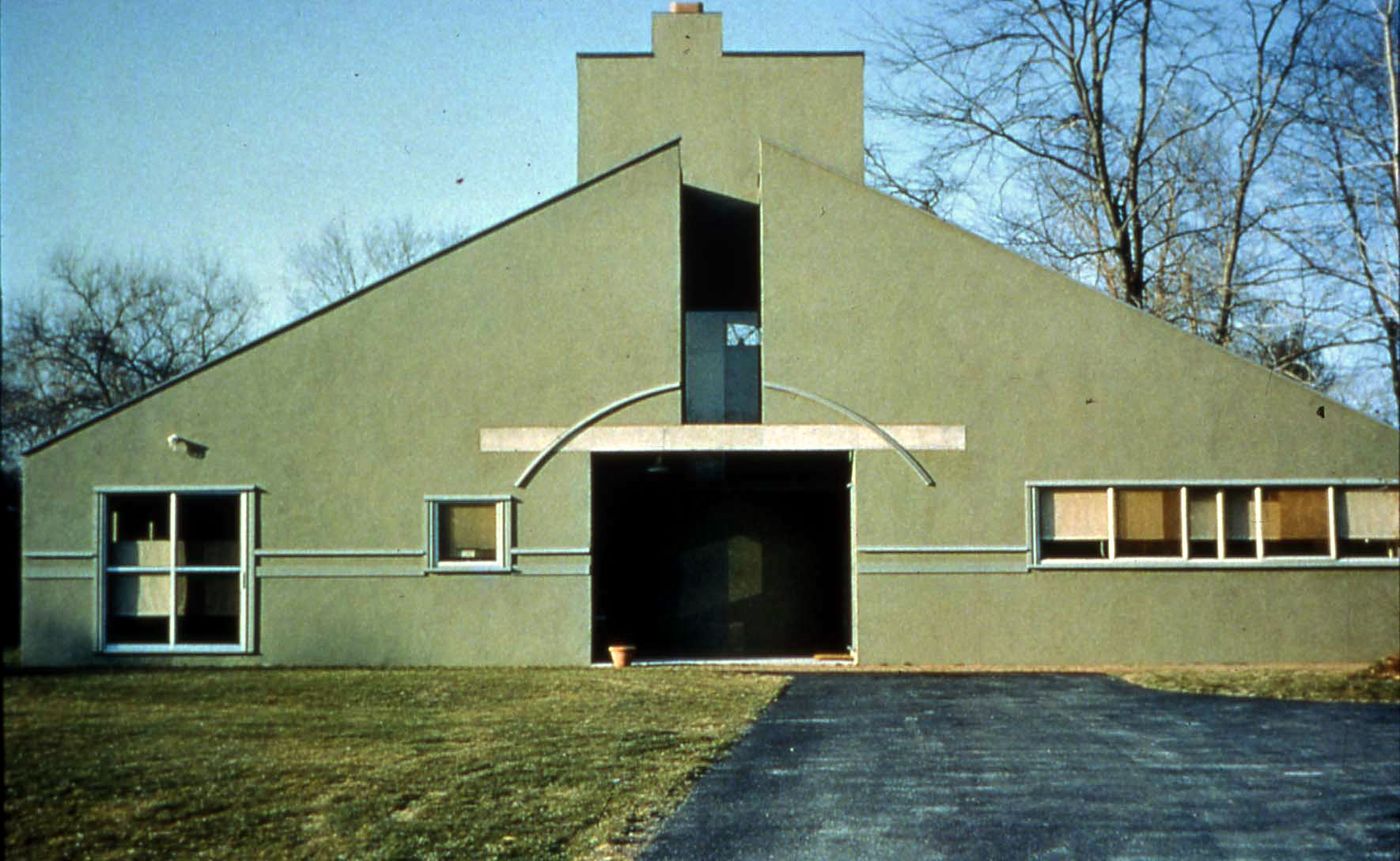
Vanna Venturi House, Philadelphia, Pennsylvania, 1959-64. ROLLIN LA FRANCE/VENTURI SCOTT BROWN AND ASSOCIATES PHOTO.
The studio, first founded with William H. Short in 1960, took on mostly small-scale projects, allowing them to manifest their beliefs in their work. From the Vanna Venturi House (1964), with its inconsistencies, asymmetry, and exaggerated forms, to the Guild House (1963), with its expansive brick facade emphasizing the vernacular of public housing, Venturi didn’t just talk about radically changing the look of architecture, he did.
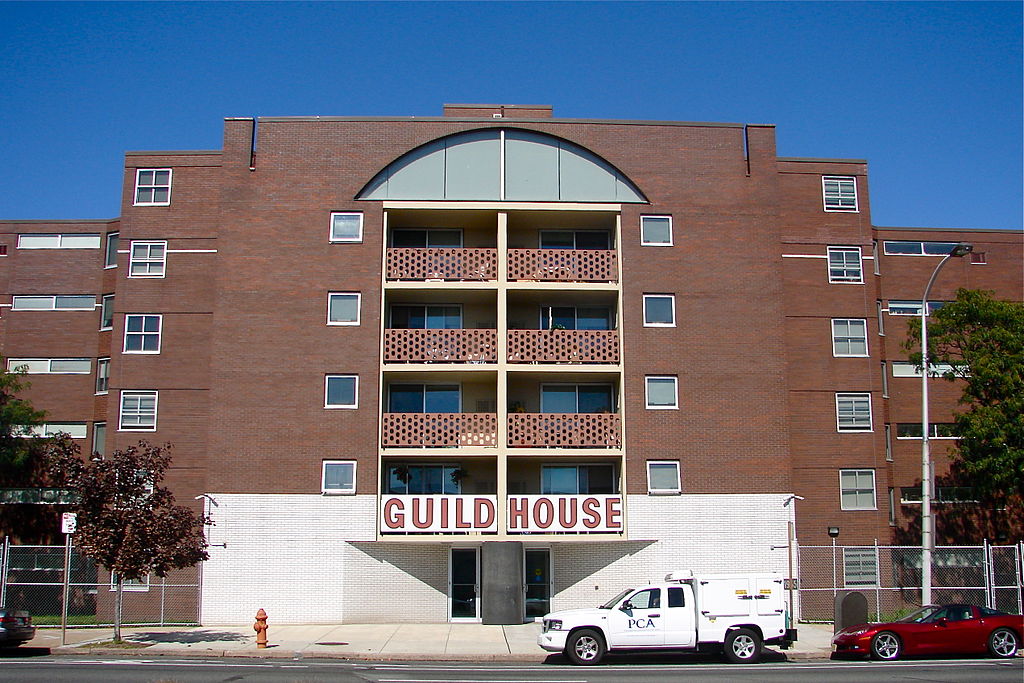
The Guild House, Philadelphia, PA, completed 1964. WIKIMEDIA COMMONS PHOTO.
In his book, Complexity and Contradiction in Architecture (1966), Venturi first articulates his belief in beauty of the everyday and the ambiguous, writing: “I am for richness of meaning rather than clarity of meaning; for the implicit function as well as the explicit function. I prefer ‘both-and’ to ‘either-or,’ black and white, and sometimes gray, to black or white … an architecture of complexity and contradiction has a special obligation toward the whole: its truth must be in its totality or its implications of totality. It must embody the difficult unity of inclusion rather than the easy unity of exclusion. More is not less.”
Venturi was not so much against modernism as he was skeptical of its humanitarian ethos. He and Scott-Brown did not let themselves be brainwashed by the utopian visions of Le Corbusier and Mies van der Rohe. They poked and prodded at modern design; their aesthetic critique culminating in their book Learning from Las Vegas(1972.) The landmark tome was the outcome of a research trip undertaken with the Yale School of Architecture to reveal the conceptual structures underneath the glitz and glamor of the kitschiest town in America. Conducting an academic study on a city like Las Vegas may seem absurd, but the book is an example of what can happen when you look at the conventional unconventionally. Venturi and Scott-Brown used modernism’s antithesis to force it to take a hard look at itself and ask: is having no symbol a symbol in of itself? Can we really create humanist architecture without thinking about the cultural and historical foundations of humanity? People are unique. We have likes. Dislikes. A heritage. A history. Why shouldn’t our architecture express this? Post-modernism, for Venturi, was not so much about overthrowing modernist practices. It was about bringing society back into architecture, which had been lost in modernist religiosity.
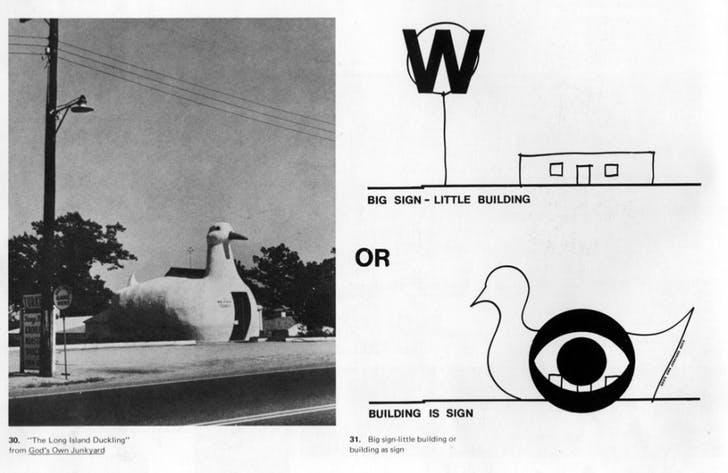
The famous duck and decorated shed from Learning from Las Vegas.
When Venturi was awarded the Prizker Prize in 1991, the jury citation lauded, “He has expanded and redefined the limits of the art of architecture in this century, as perhaps no other has, through his theories and built works.” Venturi observed the architectural landscape of modern America and transformed it with words and structures. He revealed the hidden problems of modernism and worked to show what design could be in the twenty-first century. And this refocus on people has a lasting impact on us today, especially when globalism has pushed designers to draw both from universal design ideologies and personal histories to create innovative work.
Venturi’s work is loud, hyperbolic. It demands your attention. But even if you find it unsightly, the ideas it expresses are more than the sum of its aesthetics. “The world cannot wait for the architect to build his or her utopia,” wrote Venturi, “the architect’s concern should belong not with what could be but with what is—and how to help improve it now.” Venturi worked to create his own version of utopia in reality. His fearlessness in challenging modern architecture came from a desire to create design around observations about how people are, not how they should be. It was this that made Venturi a true humanist and why he will continue to hold his place in the canon of design history.










